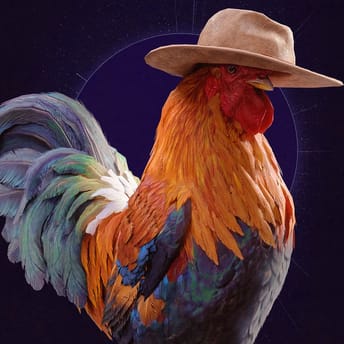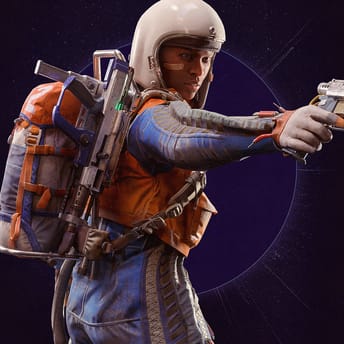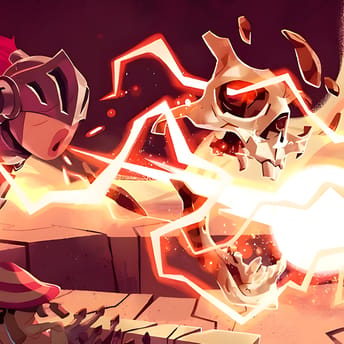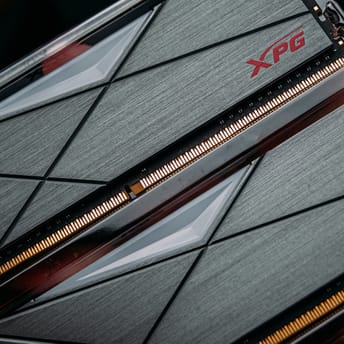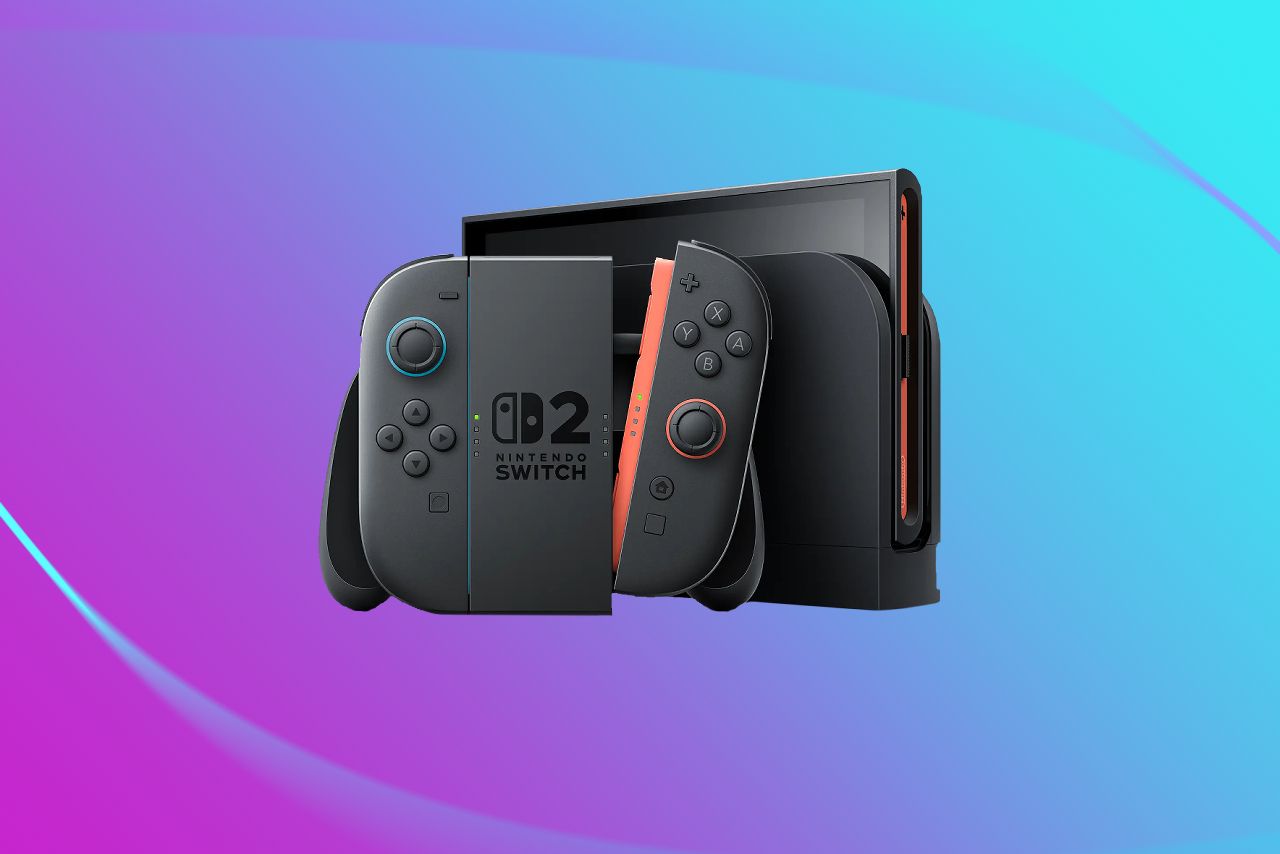
Nintendo Switch 2 Guide: Prices, Performance, Games
Nintendo unveiled the Switch 2 on April 2, 2025, and console sales started on June 5, 2025. The Nintendo Switch 2 has broken all records: it surpassed the original Switch’s launch performance, became Nintendo’s best-selling console, set new record for gaming hardware sales in the United States, and by August 2025 had sold over 6 million units.
The base price in the US is $449.99; the official bundle with Mario Kart World is $499.99 (there are more bundles with other first-party games available). Despite Trump’s tariffs, the console’s retail price in the US has remained unchanged. However, some Switch 2 accessories have become more expensive since April, and Nintendo implemented a second wave of price increases in August, affecting the first-generation model and additional accessories.
The console remains a hybrid: it is still a portable with the ability to play on a TV via a docking station, but with a noticeable update to the screen and image output. The key changes include a 7.9-inch LCD with full HD resolution, a portable design, support for 4K output via a dock, Wi-Fi 6, and Nvidia graphics technologies, including DLSS and ray tracing on a custom chip.
Nintendo Switch 2 Specifications
- Screen. 7.9″ LCD with a resolution of 1920×1080. Support for HDR10 and variable refresh rate (VRR) up to 120 Hz. The touchscreen is capacitive (which means no pressure is needed).
- System platform. A custom Nvidia SoC with hardware-level support for DLSS and ray tracing. This enables more flexible rendering and upscaling in both handheld and docked modes. 12 GB of RAM (3 GB reserved by the system).
- Storage. 256 GB UFS (with a part reserved for the system). A microSD Express slot (up to 2 TB) is available for additional storage. Standard microSD cards on Switch 2 are limited to screenshots and video clips, and games cannot be launched from them. Two cartridge types are supported: the new Switch 2 format and original Switch cartridges, but some Nintendo Switch games may not be supported on or fully compatible with the new console.
- Wireless interfaces. Wi-Fi 6 and Bluetooth. The dock includes a LAN port for wired networking.
- Console I/O: two USB-C ports (bottom for charging/dock; top for accessories/charging) and a 3.5 mm audio jack.
- Autonomy. 5,220 mAh battery, roughly 2-6.5 hours depending on game and mode. A full charge takes about 3 hours when charging in sleep mode.
Image quality output via the dock up to 3840 × 2160 at 60 fps. In 1920 × 1080 or 2560 × 1440 resolution, modes up to 120 fps are possible (docked). HDR10 is supported. In portable and tabletop modes, rendering is limited to 1080p in accordance with the screen resolution.
Joy-Con 2 controllers feature updated vibration (HD Rumble 2), gyroscope, accelerometer, and an optical mouse sensor for compatible games. The right Joy-Con also includes near-field communication (NFC). Battery life is claimed to be about 20 hours, charging when attached to the console or via the new Charging Grip.
Nintendo Switch 2 Prices
- Nintendo Switch 2 – $449.99
- Nintendo Switch 2 Pro Controller – $84.99
- Joy-Con 2 Pair – $94.99
- Joy-Con 2 Charging Grip – $39.99
- Joy-Con 2 Strap – $13.99
- Joy-Con 2 Wheel Set – $24.99
- Nintendo Switch 2 Camera – $54.99
- Nintendo Switch 2 Dock Set – $119.99
- Carrying Case & Screen Protector – $39.99
- All-In-One Carrying Case – $84.99
- AC Adapter – $34.99
- Samsung microSD Express Card (256GB) – $59.99
Nintendo Switch Online
Nintendo Switch Online (NSO) is available in two tiers: base and Expansion Pack. For Switch 2 owners, the Expansion Pack adds a library of classic Nintendo GameCube games (the Nintendo Classics app for Switch 2) and Switch 2 Edition upgrade packs for individual games from the original console (the Legend of Zelda: Breath of the Wild, Tears of the Kingdom, and more). Terms and content vary by country and are expanded over time.
Base annual prices in the US remain the same: $19.99 for standard NSO and $49.99 for NSO + Expansion Pack (individual plans; family plans are separate). A 7-day trial of the base tier is available.
New Switch 2 apps/features include GameChat, GameShare, and virtual game cards:
- GameChat is a built-in system-wide group voice/video chat (up to 12 participants), with screen sharing and console microphone integration; requires an NSO account and subscription, as well as a compatible camera for video communication (optional).
- GameShare allows local sharing of supported games: a Switch 2 owner can share a game with nearby consoles (Switch 2 and compatible Switch models) to play together without purchasing additional game copies (availability varies by game and mode).
- Virtual game cards simplify digital library management: you can pull and insert digital games between your two systems, as well as transfer a game to family group members for a limited time according to the terms of the service.
These features do not replace standard purchases and downloads through the eShop, but they expand accessibility for joint play and library management in household use.
Nintendo Switch 2 Features and Changes
Switch 2 supports 4K output via the dock, HDR10, and VRR; DLSS and ray tracing on a custom Nvidia processor are declared at the platform level. Specific modes (resolution, FPS, RT) depend on the implementation in each game.
Sleep mode and quick resume work the same; scenarios for transferring profiles, digital games, and saves from Switch to Switch 2 have been expanded (via local or server transfer). Several Switch accessories are compatible via Bluetooth, including the original Joy-Con and Pro Controller.
There are also limitations. Games from external media can only be launched from microSD Express, not the regular microSD. The old Switch dock is not compatible. Titles that use the right Joy-Con’s IR camera will require the original Joy-Con to be wirelessly attached.
Nintendo Switch 2 vs Switch OLED
What’s improved in Switch 2?
The portable screen has moved to 1080p instead of 720p on the Switch OLED. Additionally, VRR (up to 120 Hz) and system support for 4K/HDR in dock mode have appeared. The more powerful SoC and DLSS have noticeably increased stability and peak frame rates in modern games; higher graphics presets are more often available in the dock.
Built-in memory has quadrupled (256 GB versus 64 GB), and the drive is faster, which reduces loading times and reduces texture “downloading”. Wi-Fi 6 and an updated dock with a wired network have been added, and vibration and sensors in Joy-Con 2 have been improved. System transfers and family sharing are more convenient for digital libraries.
Switch OLED vs Switch 2: what’s better in OLED version?
The nominal battery life is lower: about 2-6.5 hours versus 4.5–9 hours for the OLED model, especially in games with active upscaling and high FPS. The Switch 2 has an LCD screen: it is inferior to the OLED panel in terms of contrast and black depth, although it wins in terms of frequency and adaptive synchronization.
Starting price is higher, and some old accessories (including the Switch dock) are incompatible. Additionally, microSD Express is required to launch games from a memory card, whereas regular microSDs are only suitable for media.
Switch accessory compatibility
The original Joy-Con and Pro Controller connect via Bluetooth and work in games, but the old Joy-Con do not attach to the Switch 2 body, and a separate grip/station is needed to charge them. Cases, films, and some holders from the OLED version are not suitable due to their sizes and the location of the connectors.
Modes tied to the IR camera may require the old Joy-Con; some Switch peripherals (including third-party docks/hubs) are either not supported or work with limitations.
Nintendo Switch 2 vs Steam Deck and ROG Ally
Display
- Switch 2 has a 7.9″ 1920×1080 with VRR up to 120 Hz; this provides a smoother picture and flexibility in selecting modes.
- ROG Ally features a 7″ 1080p 120 Hz display with FreeSync, typical of gaming laptops.
- Steam Deck OLED boasts a 7.4″ 1280×800 display, capable of up to 90 Hz with HDR and deep blacks. It excels in contrast and OLED response, although it operates at a lower resolution.
OS and ecosystem
- Switch 2 is a closed system with a single eShop, strict certification, and a strong line of exclusives; the interface and family functions work out of the box, without configuration.
- ROG Ally on Windows 11 supports running any launchers and anti-cheats, but it requires ongoing maintenance to address issues (driver updates, background services, and overlay conflicts).
- Steam Deck OLED on SteamOS provides better integration with Steam (overlay, fast updates, dock mode), but compatibility with individual multiplayer titles depends on the support of anti-cheats in Proton.
Autonomy
- In heavy 3D projects, ROG Ally is usually faster, but it also drains the battery quicker; optimal TDP profiles have to be selected manually.
- Steam Deck lasts longer due to the energy-efficient platform and OLED screen, but the 800p limitation imposes its ceiling on clarity.
- Switch 2 focuses on fixed profiles and DLSS, enabling it to balance quality/battery time more predictably. However, at high frequencies and active upscaling, battery life is significantly shorter.
Quick summary
- Switch 2 is for players who value Nintendo exclusives, local multiplayer, and ready-made modes on TV without configuration.
- ROG Ally is the choice if you need maximum PC flexibility, mods, and access to all Windows features (and also you need to be ready to do some tuning).
- Steam Deck OLED is optimal for the Steam library and OLED display, provided that the 800p resolution and Proton specifics suit you.
Key Nintendo Switch 2 Games
A lot of games were announced and showcased. First-party and third-party exclusive to Nintendo games are listed below:
- Mario Kart World, 79.99$. Race across seamlessly connected tracks, with new Knockout Tour and Free Roam modes.
- Super Mario Party Jamboree – Nintendo Switch 2 Edition + Jamboree TV, 79.99$. The party gets bigger, with enhanced controls, new minigames, and camera-based modes.
- Donkey Kong Bananza, 79.99$. Smash, throw, and climb through a vast underground world in DK’s new 3D adventure.
- Kirby Air Riders, 2025. Kirby returns to the skies in this brand-new air-racing game directed by Masahiro Sakurai.
- The Legend of Zelda games – Nintendo Switch 2 Editions & ZELDA NOTES, June 5, 2025. Both Switch Zelda epics return with enhanced visuals, frame rates, and faster loading on Switch 2.
- Kirby and the Forgotten Land – Nintendo Switch 2 Edition + Star-Crossed World, August 28, 2025. Play a new story chapter and enjoy a smoother performance in Kirby’s upgraded adventure.
- Hyrule Warriors: Age of Imprisonment, winter 2025. Discover the hidden battles of the Imprisoning War in this new Zelda spin-off.
- Drag x Drive. A fast-paced 3v3 racing battler where both Joy-Cons are used to steer and boost; a showcase of new Joy-Cons.
- The Duskbloods, 2026. A dark fantasy game with PvPvE focus from FromSoftware. Hidetaka Miyazaki looked “for a little multiplayer inspiration” in Escape from Tarkov.
Other supported games
- ELDEN RING Tarnished Edition
- Hollow Knight: Silksong (release planned for 2025)
- Enter the Gungeon 2
- Hades II
- Street Fighter 6
- SPLIT FICTION
- Hogwarts Legacy
- Tony Hawk’s Pro Skater 3 + 4
- HITMAN World of Assassination – Signature Edition & Project 007
- DELTARUNE
- Borderlands 4
- Sid Meier’s Civilization VII – Nintendo Switch 2 Edition
- STARSEEKER: Astroneer Expeditions
- Cyberpunk 2077: Ultimate Edition
- Human Fall Flat 2
- And many more, complete list here.
A few words about backward compatibility, Nintendo announced support for some games from the first Switch, with the ability to purchase upgrade packs for other games (for example, The Legend of Zelda: Breath of the Wild – Nintendo Switch 2 Edition). Not all games will be fully compatible.
Nintendo Switch 2 Accessories
Official peripherals
The Pro Controller for Switch 2 has updated vibration (HD Rumble 2), GL/GR buttons with remap, NFC, a headset jack, and a separate C button for GameChat. Joy-Con 2 supports mouse mode in compatible games and is supplied in pairs or individually. A camera for GameChat (USB-C), a dock with HDMI and LAN, straps/wheels, and branded cases are available separately.
Memory and cards
Switch 2 uses only microSD Express to launch games from external media; regular microSDs are suitable for media (screenshots/clips). Branded microSD Express cards of 256 GB and above are available for sale; the alternative is 256 GB of internal memory. Experiments by enthusiasts with NVMe via adapters have not yet led to a working configuration.
Compatibility
Switch controllers (Joy-Con and Pro) can be connected to Switch 2 via Bluetooth and used in games; some Joy-Con accessories (grip, wheels, battery packs) are not compatible with Joy-Con 2. The GameCube controller works via an adapter in the dock, as before.
Nintendo Switch 2 Pros and Cons
Switch 2 advantages
- Strong first-party lineup at launch and in year one (Mario Kart, Donkey Kong, Metroid), plus active support from major publishers.
- Hybrid form factor, 1080p in handheld and up to 4K/HDR in dock, VRR/up to 120Hz; DLSS and RT at platform level.
- Larger and faster system memory (256GB UFS), faster load times, Wi-Fi 6, improved controllers and system features (GameChat, game sharing).
- Switch 2 Edition upgrades for old Switch games via Expansion Pack subscription.
Switch 2 disadvantages
- Battery life is lower compared to original Switch, especially in demanding games and high-frequency modes.
- The LCD screen is inferior to OLED in contrast, although it wins in frequency and VRR (and no risk of burn-ins).
- Increased requirements for memory cards: microSD Express is needed for games.
- Partial incompatibility with old accessories (including the dock).
Is Nintendo Switch 2 Worth It? Summary
Who should buy the Switch 2?
Those who play on both portable and TV devices, expect major Nintendo releases in the coming year, want stable 1080p in portable mode and up to 4K/HDR when docked, and value fast loading plus simple family features (profiles, shared digital access).
Who should consider alternatives?
Players, who prioritize maximum battery life in demanding games, an OLED screen, or an open PC ecosystem with mods and multiple launchers, should look at the Steam Deck OLED or ROG Ally. The Switch OLED remains a viable option if 4K/VRR and DLSS aren’t priorities, but you will miss out on newer exclusives.





